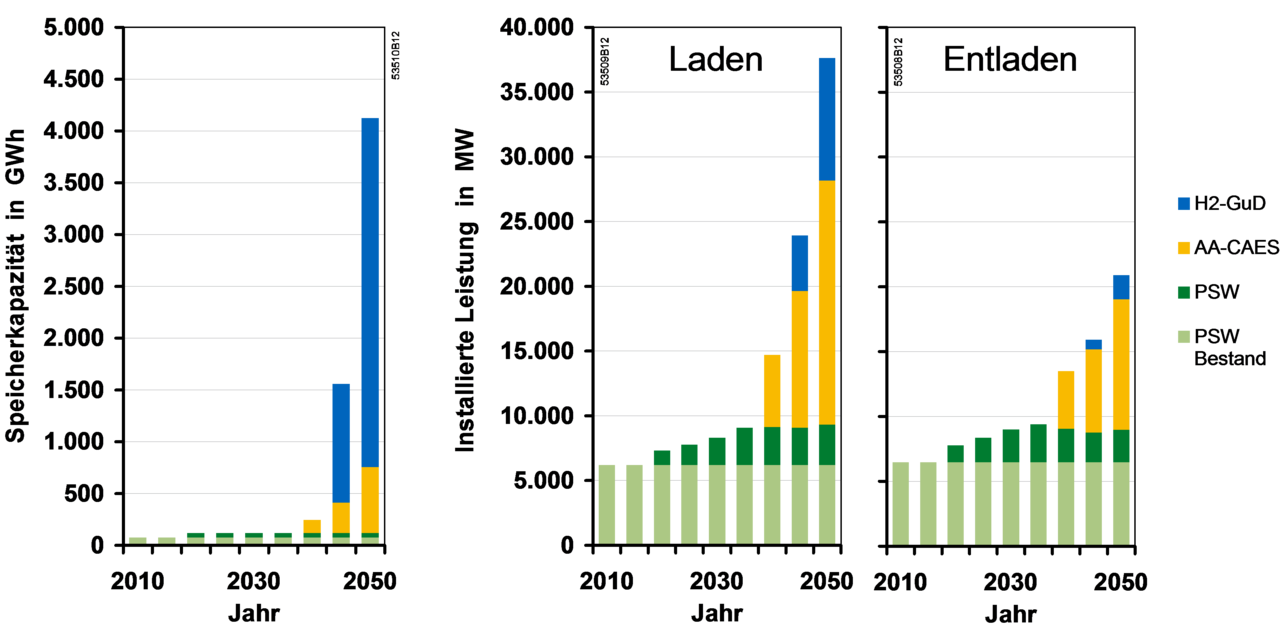| Partner | E.ON Energie AG |
| Funding | Bavarian State Ministry of Science, Research and the Arts, Bavarian State Ministry of Economic Affairs, Infrastructure, Transport and Technology |
| Duration | January 2009 till December 2011 |
| Contact | Dr.-Ing. Philipp Kuhn |
| Documente | Final Report |
As part of the project, the economic potential for large-scale generation-side storage and the influence of consumer-side storage in an electricity system with a growing proportion of fluctuating generation was investigated using a model. For this question, a model was to be developed that optimizes the expansion of conventional power plants and large-scale storage technologies equally under given framework parameters up to the year 2050. The focus of the model design was on mapping the storage options in as much detail as possible with regard to the technical degrees of freedom and a high temporal resolution. In the area of consumer-side storage, the optimized operation of electric vehicles, refrigerators and storage heaters were examined as examples.

The results of the calculations show that an increased expansion of renewable energies leads to a growing economic potential for large-scale storage technologies. All of the technology options considered in the project have a place in the portfolio. Short-term storage is realized by pumped storage plants and adiabatic compressed air storage, whereas hydrogen storage is mainly used seasonally. The optimal dimensioning of the systems depends heavily on the respective technology and is orders of magnitude higher than the currently installed pumped storage plants, particularly in terms of storage capacity. The options investigated for consumer-side storage all lead to a reduction in the economic potential of large-scale storage, albeit to varying degrees.
The KW21 research initiative is based on a public-private partnership. This sub-project was publicly funded by the Bavarian State Ministry of Science, Research and the Arts and the Bavarian State Ministry of Economic Affairs, Infrastructure, Transport and Technology. The funds come from the Bavaria 2020 climate program. On the industry side, this sub-project was financed by E.ON Energie AG.